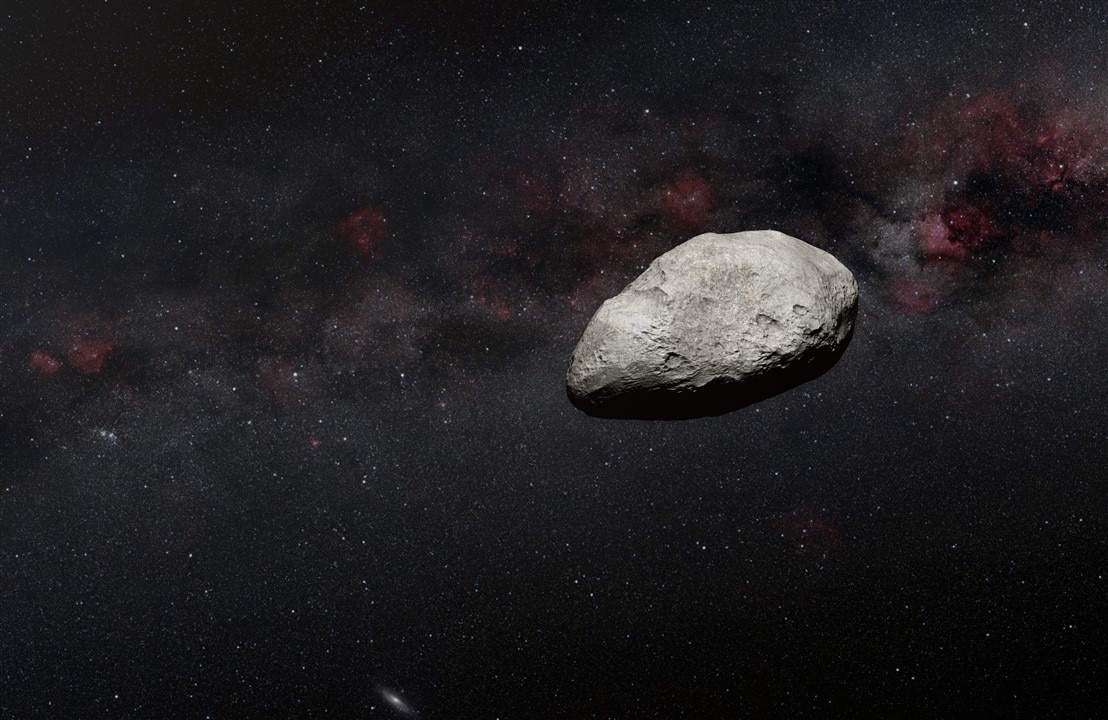
Asteroid 2024 PT5 is expected to be captured by Earth's gravity on Sunday, September 29 and leave on Monday, November 25. (Image credit: Wikipedia)
NASA scientists have calculated that the Earth will gain a second 10-meter-wide "moon" this Sunday (September 29, 2024). The mini-moon, identified as Asteroid 2024 PT5, typically orbits the sun as part of the Arjunas NEOs (Near Earth Objects), a small asteroid belt that follows Earth. The asteroid was discovered on 2024 August 7 (2024) by the Asteroid Terrestrial-impact Last Alert System located in Sutherland, South Africa, which watches the sky for any space objects that could potentially strike the planet.
"The object that is going to pay us a visit belongs to the Arjuna asteroid belt, a secondary asteroid belt made of space rocks that follow orbits very similar to that of Earth at an average distance to the sun of about 93 million miles (150 million kilometers)," stated Professor Carlos de la Fuente Marcos of the Complutense University of Madrid. "Objects in the Arjuna asteroid belt are part of the near-Earth object population of asteroids and comets."
By following the asteroid's size, speed and trajectory, the scientists were able to estimate the asteroid's path, which is expected to follow a horseshoe-type orbit around the Earth, then return to a path around the sun when it leaves the planet's gravity. The next time we see Asteroid 2024 PT5, it will be 2055. This isn't the first time the Earth has had an asteroid become a temporary moon, as scientists have documented two prior captures that have lasted about a week before heading back out into space. Those are known as "short capture" events, as the tiny bodies don't stay much longer than five to seven days or so, while others are known as "long capture" events for those that can last years, completing one or more orbits around the Earth. Sadly, NASA states Asteroid 2024 PT5 will not be visible due to its extremely low absolute magnitude of 22, which is too dim even for backyard binoculars or telescopes.
Have a story tip? Message me at: http://twitter.com/Cabe_Atwell
